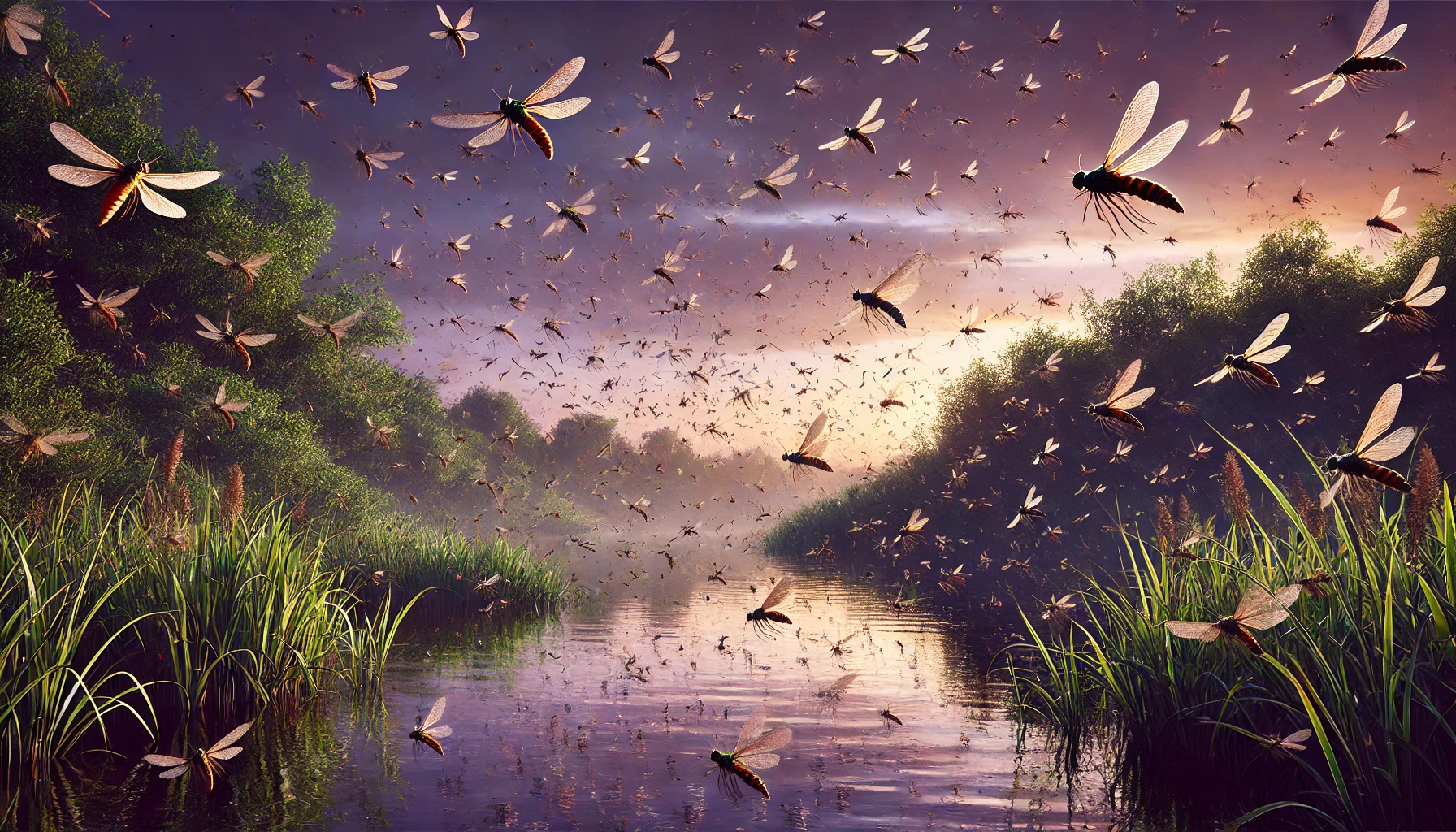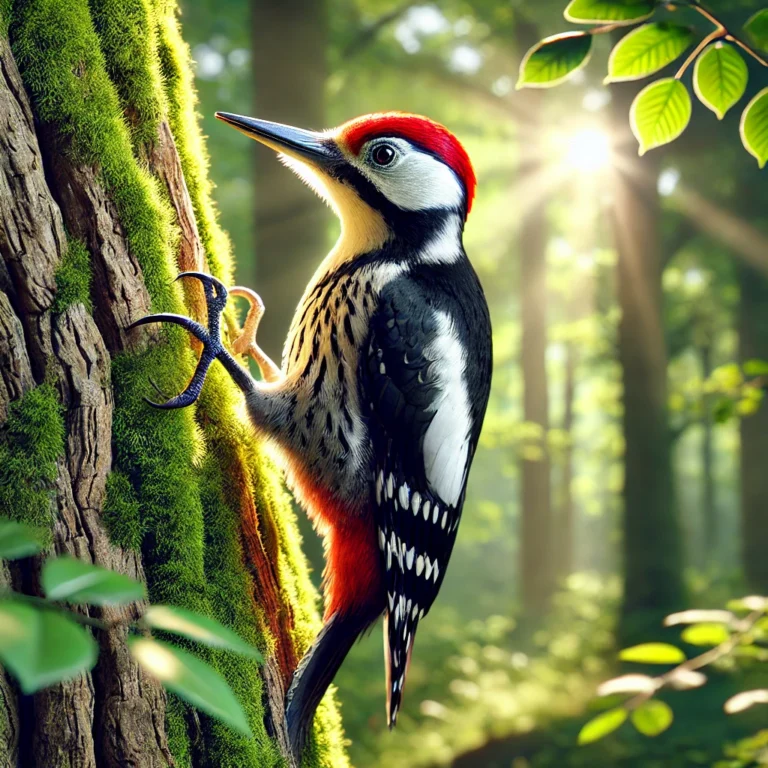
Ah, the day fly—more commonly known as the mayfly. It’s a creature straight out of existential philosophy: a species that lives most of its life preparing for a day (sometimes mere hours) of intense, fleeting activity before vanishing altogether. But here’s the kicker: their entire lifecycle is a bizarre paradox, a natural blink-and-you’ll-miss-it mystery.
Let’s dig into their weird world.
The Clock Is Ticking: A Day to Live
Imagine being born with a countdown timer set to less than 24 hours. That’s the fate of most adult mayflies. In many cases, they hatch, dance, mate, and die all on the same day. Some live as briefly as five minutes, while others might stretch their luck to about 24 hours—but once adulthood hits, their mission is singular and ruthless: make more mayflies.
And here’s the truly wild part: in their adult form, they don’t have mouths—no food, no snacks, not even a sip of water. Nature designed them to care only about reproduction. Once they’ve mated and laid eggs, their bodies rapidly deteriorate. Wings fray like brittle parchment, and they crash to their final resting place.
But that’s just the grand finale. To understand why they’re built this way, we have to look at their hidden years of preparation.
The 364-Day Waiting Game
Mayflies aren’t as short-lived as their reputation suggests—at least not at first. Before their dramatic one-day dash, they spend up to three years living underwater as aquatic larvae called nymphs. In this phase, they’re surprisingly hardy, thriving in clean streams and rivers where they feed on algae and detritus.
During this stage, nymphs molt several times, shedding their skin to grow larger. They also play an essential ecological role by serving as a key food source for fish like trout. But these nymphs have a secret—they’re already preparing for their final transformation.
One day (usually during spring or summer), triggered by water temperature and light cycles, they ascend from the water in droves. And when I say droves, I mean swarms so dense they can darken the sky. Some riverside towns in the U.S. Midwest have had to use snowplows to clear away heaps of dead mayflies after mass hatchings!
A Sky Full of Wings
This mass emergence is a spectacle of life and death, one that’s been described by naturalists as both mesmerizing and macabre. The sky fills with millions of mayflies performing their mating dance—a fluttering, synchronized ritual that can resemble snow falling in reverse. Males swoop and dive, hoping to impress a female before time literally runs out.
But why the swarm? It’s a survival strategy. By emerging all at once, the mayflies overwhelm predators like birds and bats. Even if thousands get picked off, enough will survive to mate and deposit their eggs in water, continuing the cycle.
Ancient Insects: Older Than Dinosaurs
The mayfly’s story isn’t just strange—it’s ancient. Fossil evidence shows that these insects have been around for at least 300 million years—older than most dinosaurs. They belong to the insect order Ephemeroptera, a name derived from the Greek word ephemeros, meaning “short-lived.”
In some cultures, this ephemeral nature has become a powerful symbol. In Japanese folklore, mayflies represent the transience of life—brief, beautiful, and bittersweet. Meanwhile, Indigenous tribes in North America saw the annual emergence as a sign of ecological renewal.
The Modern Mayfly Apocalypse?
Despite their resilience, mayflies are now facing a new kind of existential threat: pollution and climate change. Because their nymphs require pristine, oxygen-rich waters to survive, even slight increases in water pollution or temperature can devastate local populations.
Several regions have reported alarming declines in mayfly numbers. This isn’t just an insect problem—it disrupts entire ecosystems. Fish species that depend on mayflies for food face starvation, and the delicate balance of river ecosystems begins to crumble.
But on the flip side, some towns near major rivers have come to dread too many mayflies. In extreme cases, swarms have caused car accidents, clogged streetlights, and created slippery hazards on roads. In 2020, a viral video showed a Wisconsin bridge completely blanketed by millions of dead mayflies, prompting surreal headlines like “Insect Snowstorm Hits Midwest.”
Pop Culture and Philosophical Ponderings
Though mayflies aren’t as meme-worthy as cats or UFOs, they’ve made their mark on pop culture. In literature and philosophy, they often serve as metaphors for the fleeting nature of time. The idea of “living for the moment” resonates strongly when you’re thinking about a creature that lives only for a few hours.
In the animated classic “A Bug’s Life,” there’s a famous scene where a mayfly exclaims, “I’ve only got 24 hours to live!”—a perfect blend of humor and tragedy that captures their strange biology.
Meanwhile, modern social media has given rise to quirky challenges like the “Live Like a Mayfly for a Day” trend, where participants cram as many life experiences as possible into 24 hours. Spoiler: most fail spectacularly.
Final Thoughts: The Day Fly’s Legacy
So, the next time you see a swarm of fluttering insects near a river, take a moment to appreciate the day fly. It’s a creature that defies time, living an existence both microscopic and epic in scale. Their lives remind us that even the briefest moments can hold beauty and significance.
And who knows? Maybe their story will inspire you to seize your own day. After all, we’re all on a ticking clock—just not quite as fast as theirs.








Your point of view caught my eye and was very interesting. Thanks. I have a question for you.
i2h4sw
Thanks, I have recently been looking for information about this topic for a while and yours is the greatest I have found out till now. However, what concerning the bottom line? Are you certain in regards to the supply?
Thanks for sharing. I read many of your blog posts, cool, your blog is very good.
I consider something genuinely special in this website .
I like this web site so much, saved to favorites.
Whats up are using WordPress for your site platform? I’m new to the blog world but I’m trying to get started and create my own. Do you need any html coding knowledge to make your own blog? Any help would be greatly appreciated!